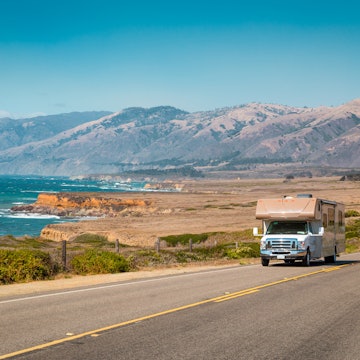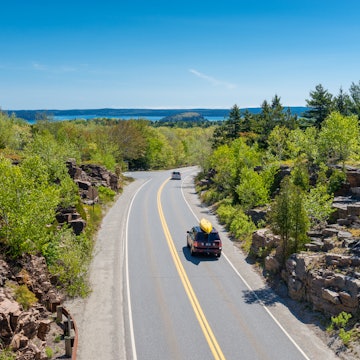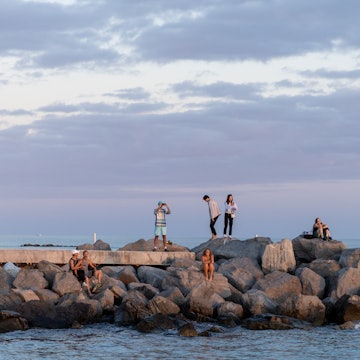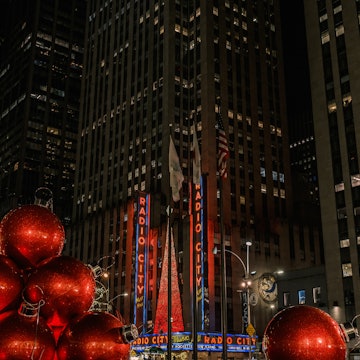
No, the Amtrak dining car isn’t going away, but it is changing
Oct 16, 2019 • 7 min read

For decades, Amtrak passengers on long-haul lines like the Coast Starlight and Lake Shore Limited have enjoyed meals like this one, on white linen and company china, prepared fresh by chefs onboard the dining car. © Meghan O'Dea / Lonely Planet
It is not the end of an era for the Amtrak dining car. Not yet.
But it does appear to be a partial casualty of the new, 'exclusive' and 'flexible' enhancements that Amtrak has introduced to cut costs and, apparently, appeal to millennial travelers.
On October 1, Amtrak announced that the way its passengers dine on board was about to 'evolve.' Counterintuitively, the marquee decision was to eliminate the Amtrak dining car with white linen tablecloths and fresh, meals cooked in on-board kitchens from several one-night train routes east of the Mississippi River.

The end of an era for the Amtrak dining car?
These shifts were reported by media in somewhat alarmist terms as elimination of full-service dining on long-distance routes, the demise of an American tradition, or even then end of an era.
Amtrak’s announcement even triggered a change.org petition that, as of October 15, had attracted the signatures of over 15,400 faithful train aficionados refusing to surrender without a fight. 'We cannot let an icon of American railroading fade into history. After all, the Dining Car is a true part of the passenger railroad experience,' wrote an early signer.
While it's true that the alterations probably presage more sweeping ones to come, all is not yet lost. And, in any case, many of the enhancements appear to have misled Amtrak's growing passenger base about the true nature of the updates, both good and bad.
The routes affected by changes to Amtrak’s dining service include the Cardinal (New York–Chicago), City of New Orleans (Chicago–New Orleans), Crescent (New York–New Orleans) and Silver Meteor (New York–Miami) lines. Similar service modifications will hit the Silver Star (New York–Miami) in 2020, and have already impacted the Capitol Limited (Washington, DC–Chicago) and Lake Shore Limited (New York–Chicago) routes.

Amtrak dining car changes are a boon for sleeper car passengers
Instead of the traditional dining car, Amtrak introduced “enhancements” for sleeping car customers on those lines. Those fresh perks include a new 'flexible dining' menu with a continental breakfast buffet, hot prepackaged (but not boxed) lunch and dinner meals, wine, beer and other alcohol offerings, plus unlimited soft drinks, coffee and tea.
Sleeping car passengers on those eastern lines can also enjoy the complimentary option of ordering their meals to be served in one's room by a sleeping car attendant, or dining in an unreserved lounge space with booth seating (but no linens) – exclusive for premium passengers.
Meanwhile, coach-class passengers will have access only to the café car, where the current limited selection of hot food options will eventually expand to include the option to pre-purchase meals also available to premium riders.
The biggest minus, of course, is the conversion of some dining cars – once open to all passengers during scheduled meal times (free to premium riders, a la carte for those in coach) – into controlled-access lounges for fewer than 100 sleeping car passengers.
Related content: Southwest USA by train
Glacier National Park by train
Amtrak is offering 2-for-1 sleeper tickets: here’s where you can go

Yes, you can still find full-service dining on Amtrak
Meanwhile, the tradition of full-service dining on Amtrak trains still persists for now, albeit only on overnight rail routes operating west of the Mississippi (the California Zephyr, Coast Starlight, Empire Builder, Southwest Chief, Sunset Limited and Texas Eagle) and the Auto Train between Virginia and Florida.
There is another silver lining, however – the new “flexible dining” approach actually brings more elaborate food service to the Cardinal and the Silver Star, neither of which has had dining cars for years.
Other upgrades are being made to East Coast trains impacted by the new vision. 'We are modernizing our trains and stations and adding contemporary amenities to make trains the preferred mode of travel for customers,' said Kimberly Woods, Amtrak Spokeswoman.
These include new seat cushions with lumbar support, refreshed carpets, curtains and LED reading lights in coach-class cabins, and upgraded bedding, linens and towels in sleeping cars. Amtrak will also debut new Viewliner II sleeping and dining cars for East Coast trains, announced as 'the first addition to the Amtrak sleeper fleet in more than 25 years.'

Changing tastes cited as the reason for Amtrak dining car changes
Speaking to the Washington Post, Peter Wilander, who oversees Amtrak’s customer experience, couched these changes as ‘part of an evolution.’
That’s the same language used to describe the changes by Amtrak President and CEO Richard Anderson in an announcement about 'exclusive sleeping car experiences.' He confirmed, ‘We continue to evolve our onboard accommodations and dining experience to meet the needs of today’s customers.’
'Today's customers' is an apparent reference to millennials, a demographic Amtrak is eager to reach. ‘Some people really like (the dining car) and view it as sort of a nostalgic train experience,’ Wilander continued.
‘Some people, especially our new millennial customers, don’t like it so much. They want more privacy, they don’t want to feel uncomfortable sitting next to people.’ People who are, presumably, strangers. But while dining side-by-side with fellow travellers can feel like a roll of the dice, isn't that true of life every day?
‘Being seated with a charming companion or two is one possible outcome. I know of at least one marriage founded in the dining car of the Empire Builder,’ remembered Nicolas Clifford, a transportation consultant and former Amtrak onboard service employee.
‘One has only to conjure the image of Eva Marie Saint inviting Cary Grant to join her at her table on the 20th Century Limited in “North by Northwest” to understand the fantasy,’ Clifford added. ‘But another outcome was to be seated with the couple from American Gothic. The meal was hastily consumed, and largely in silence.’

Are millennials to blame for the shift, or is it to stay on the right side of the law?
Although the changes are being couched as a necessity predicated by generational tastes, they are notably in accordance with the Passenger Rail Reform and Investment Act of 2015 (H.R. Bill 749), which, among other things, directed Amtrak ‘to develop a plan to eliminate the operating loss for food and beverage service on board its trains’ by barring the use of federal funds ‘to cover any such loss on a route operated either by Amtrak or by an alternative passenger rail service provider in lieu of Amtrak.’
So while nostalgia for freshly prepared meals ramps up east of the Mississippi – gone are the days of steaks cooked to order or sharing Railroad French toast watching sunrise over the Smoky Mountains – Amtrak has to cut costs.
Savings of about $2 million a year are expected by shifting to prepackaged meals, although this ignores that a hefty portion of sleeping car fares should be considered revenue for food and beverage service. ‘Amtrak apportions the sleeper revenues as it sees fit, so its hands aren’t tied as much as they seem,’ noted Clifford.

Vigilance continues
This shift has happened under the watchful eye of the Rail Passengers Association (RPA), the largest advocacy organization for rail passengers in the U.S., which reported in late August that it had been ‘meeting informally with Amtrak leaders and executives to try to work out something better’ than proposed.
Apparently, this was to limited avail, as Amtrak ‘barrel[ed] ahead with an offering that remains flawed and potentially threatens the attractiveness of the trains without substantively addressing the shortcomings we identified.’
This much is certain: train buffs don't want train food to go the way of plane food. It's of particular concern as Amtrak's current CEO was previously the CEO of Northwest Airlines and Delta Air Lines. ‘Many railroad insiders feel that he doesn’t understand the first-class rail market,’ remarked Clifford. ‘Which is curious, since airline economics depend heavily on the 'front cabin' revenues.’
As RPA member Gary Bell shared in the Passengers Voice newsletter from October, ‘Cutting back on extra touches like great dining may save some money but it makes the whole train experience less special. If I just wanted to save money and get a cheap meal, I could fly instead.’
As another change.com petition signer wrote: ‘Amtrak is not an airline so please don’t run it like one.’













